The first Sunday in October had me paddling a kayak through what turned out to be a surprisingly area of mangroves in a part of Singapore where nature has long abandoned. Described by the Nature Society (Singapore) as “the most extensive mangrove forest in the southern coastline of mainland Singapore”, the mangroves line the banks of a stretch of Sungei Pandan where the industrial march that has all but conquered Singapore’s once wild southwest is quite clearly evident.
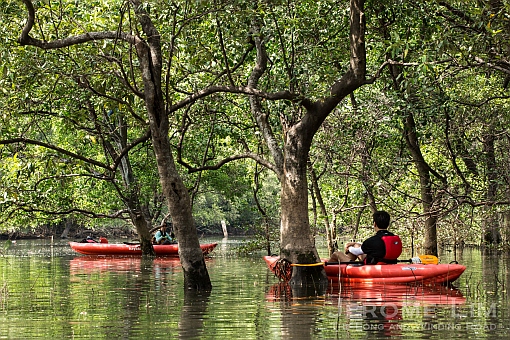
Kayaking through the Sungei Pandan mangroves.
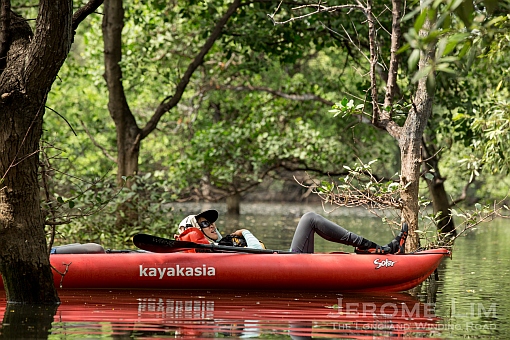

The Sungei Pandan mangroves, found along the stretch of river that lies between the Pandan Tidal Gates and the Sungei Pandan Bridge, is perhaps the last remnants of the lush mangrove forest that had once lined much of the banks of the Pandan and Jurong Rivers that had been offered protection as the Pandan Forest Reserve. The reserve covered an area of 542 acres or 219 ha. in 1966 and may have covered an even larger area before that – a newspaper article from 1928 had put the area of the reserve at 639 acres or 259 ha. and had been one of 15 forest areas that was protected under the Forest Ordinance enacted in 1908, and later, the 1951 Nature Reserves Ordinance.

The Pandan Tidal Gates.
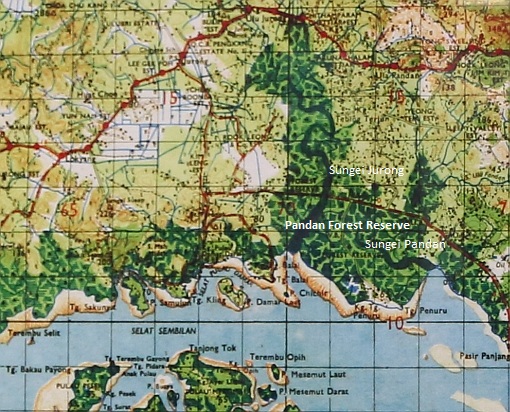
A 1945 Map showing the extent of the Pandan Forest Reserve.
The death knell for the mangrove reserve was sounded in the 1960s when land was needed for the expansion of Jurong Industrial Estate. An amendment to the Nature Reserves Ordinance in 1966 saw it lose the 186 acres (75 ha.) on the west bank of Jurong River and that was filled up to create much needed land for the fast expanding industrial zone. The reserve was to lose its status altogether in 1968 when a further amendment to the Ordinance removed the reserve from its schedule of protected forest areas to allow what was described as the “rapid growth of Jurong Industrial Estate”.

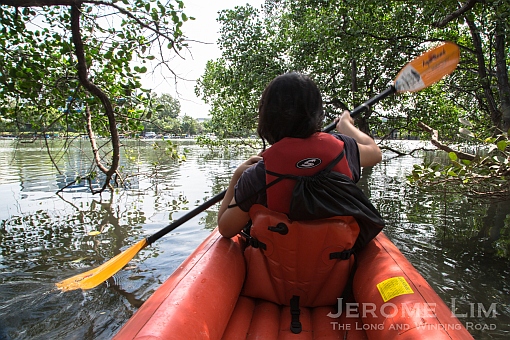
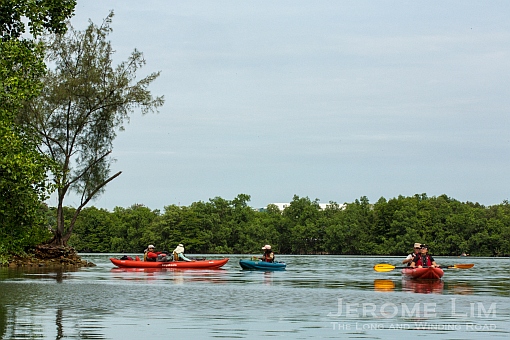
The mangrove forest, besides being home to a rich diversity of flora and fauna, also hosted human inhabitants, many of whom were fishermen who depended on cast net prawn farming in the vicinity of the river mouths and the islands for a livelihood. One of the isolated villages that was found at the edge of the watery forest, was Kampong Teban, described in an article from The Singapore Free Press dated 13 January 1958 as “a village of 135 people living in 27 cottages, some built on stilts over the ooze and slime on the river bank”. The villagers were to see their lives altered by developments n the early 1960s, when part of the area was given to prawn farming.

Kampong Teban, 1958 (source: http://www.nas.gov.sg/archivesonline).
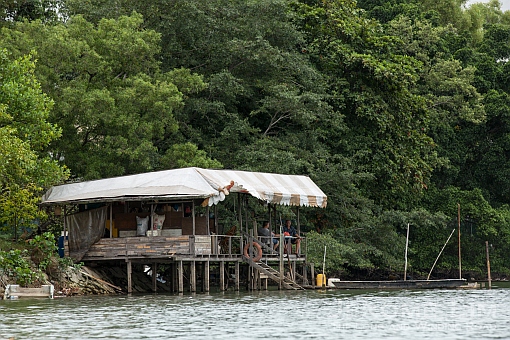
The original mouth of Sungei Pandan, was where the Republic of Singapore Yacht Club (RSYC), then the Royal Singapore Yacht Club, moved its premises to, on land reclaimed from the mangroves, in 1965. The club, which traces its origins to 1826, moved in 1999 sometime after it lost its seafront to land reclamation. Its former clubhouse is now occupied by the Singapore Rowing Association – close to where the kayaking trip started.

The entrance to the grounds of the Singapore Rowing Association, formerly the site of the RSYC.

The start point for the kayak trip.
Paddling through the greenery offered by the mangroves, nipah palms and mangrove ferns, the sounds of tree lizards and birds were most evident. Beyond the distinct calls belonging to the ashy tailorbird and the pied fantail – birds that often are heard before they are seen, the likes of grey and striated herons, and white-bellied sea eagles gave their presence away flying overhead. A special treat came in the form of an Asian paradise flycather – a particularly beautiful avian resident of the watery forest, dancing across the mangrove branches. Besides the lizards and the birds, the forest is also plays host to fauna such as mud lobsters, mudskippers, horseshoe crabs, mangrove snails and the dog-faced water snake.

The dance of the Asian paradise flycatcher…
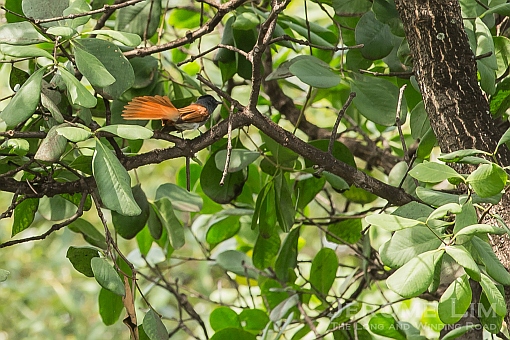
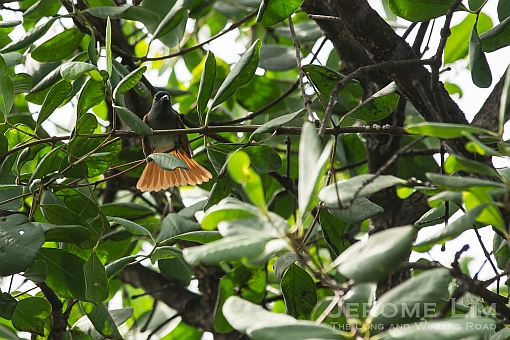

A grey heron in flight.

Another grey heron in flight.

A striated heron perched on a fallen trunk.
The Sungei Pandan mangroves is all that remains of a once rich mangrove forest. What the crystal ball that is the URA Master Plan tells us is that the area in which it is situated has been designated as a park space. It would be nice to see that the mangroves remain untouched, not just to remind us of the lost forest, but more importantly to protect an area that despite its location and size, is a joyously green space teeming with life.
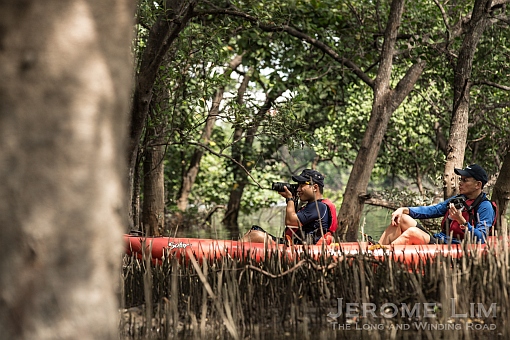
One of the kayakers was Minister of State Desmond Lee, who is an avid bird watcher.
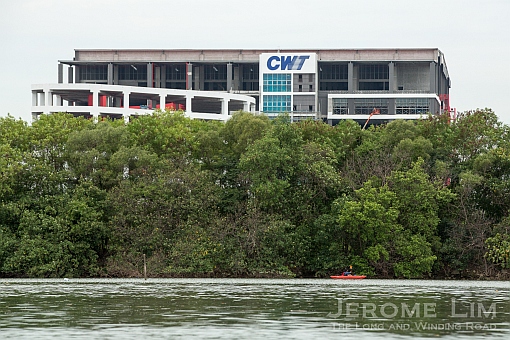





































































Reblogged this on beingsimplygreen.